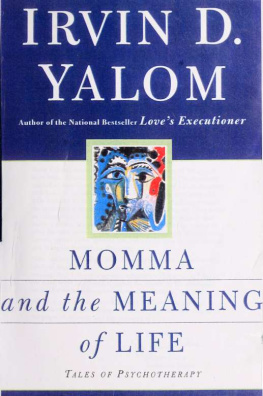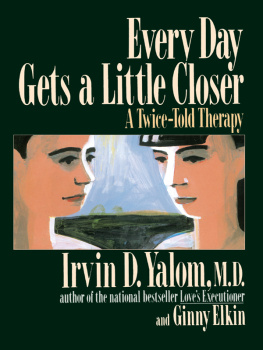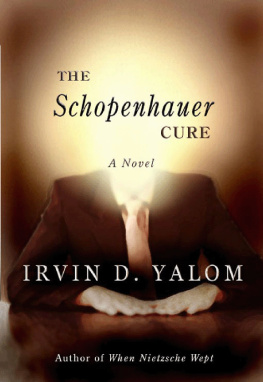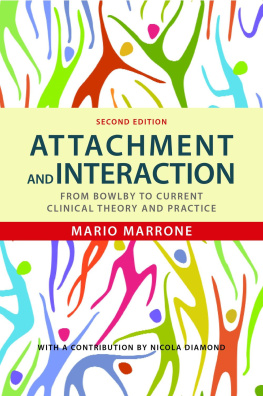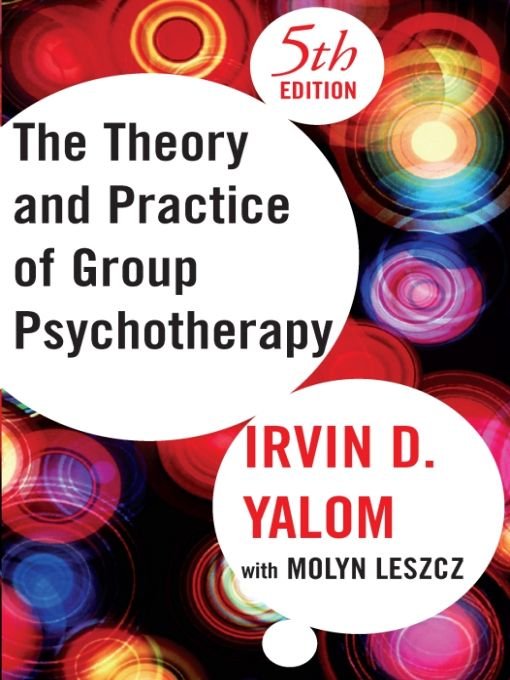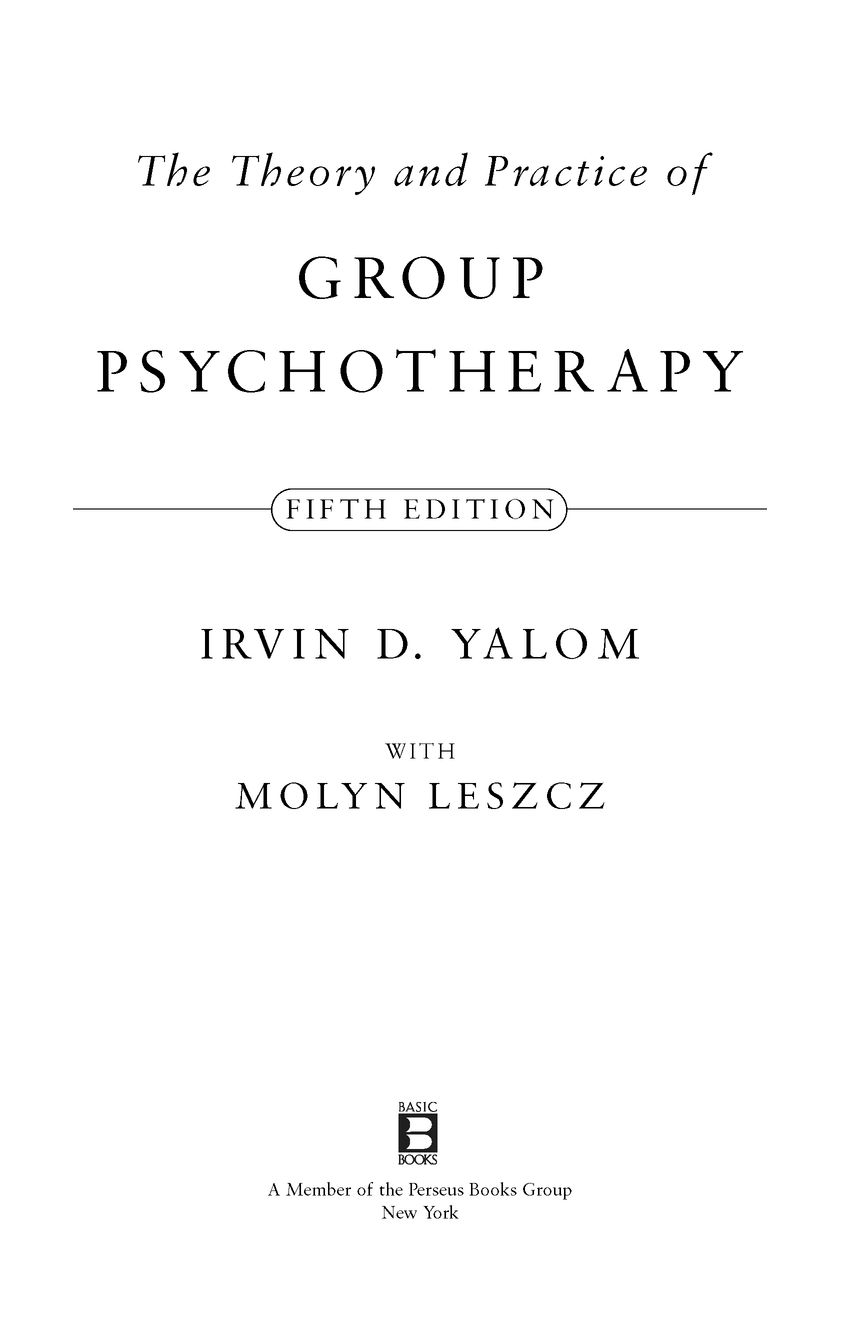Table of Contents
ALSO BY IRVIN D. YALOM
Existential Psychotherapy
Every Day Gets a Little Closer: A Twice-Told Therapy
(with Ginny Elkin)
Encounter Groups: First Facts
(with Morton A. Lieberman and Matthew B. Miles)
Inpatient Group Psychotherapy
Concise Guide to Group Psychotherapy
(with Sophia Vinogradov)
Loves Executioner
When Nietzsche Wept
Lying on the Couch
Momma and the Meaning of Life
The Gift of Therapy
The Schopenhauer Cure
ALSO BY MOLYN LESZCZ
Treating the Elderly with Psychotherapy:
The Scope for Change in Later Life
(with Joel Sadavoy)
To the memory of my mother and father, RUTH YALOM and BENJAMIN YALOM
To the memory of my mother and father, CLARA LESZCZ and SAUL LESZCZ
Preface to the Fifth Edition
For this fifth edition of The Theory and Practice of Psychotherapy I have had the good fortune of having Molyn Leszcz as my collaborator. Dr. Leszcz, whom I first met in 1980 when he spent a yearlong fellowship in group therapy with me at Stanford University, has been a major contributor to research and clinical innovation in group therapy. For the past twelve years, he has directed one of the largest group therapy training programs in the world in the Department of Psychiatry at the University of Toronto, where he is an associate professor. His broad knowledge of contemporary group practice and his exhaustive review of the research and clinical literature were invaluable to the preparation of this volume. We worked diligently, like co-therapists, to make this edition a seamless integration of new and old material. Although for stylistic integrity we opted to retain the first-person singular in this text, behind the I there is always a collaborative we.
Our task in this new edition was to incorporate the many new changes in the field and to jettison outmoded ideas and methods. But we had a dilemma: What if some of the changes in the field do not represent advances but, instead, retrogression? What if marketplace considerations demanding quicker, cheaper, more efficient methods act against the best interests of the client? And what if efficiency is but a euphemism for shedding clients from the fiscal rolls as quickly as possible? And what if these diverse market factors force therapists to offer less than they are capable of offering their clients?
If these suppositions are true, then the requirements of this revision become far more complex because we have a dual task: not only to present current methods and prepare student therapists for the contemporary workplace, but also to preserve the accumulated wisdom and techniques of our field even if some young therapists will not have immediate opportunities to apply them.
Since group therapy was first introduced in the 1940s, it has undergone a series of adaptations to meet the changing face of clinical practice. As new clinical syndromes, settings, and theoretical approaches have emerged, so have corresponding variants of group therapy. The multiplicity of forms is so evident today that it makes more sense to speak of group therapies than of group therapy. Groups for panic disorder, groups for acute and chronic depression, groups to prevent depression relapse, groups for eating disorders, medical support groups for patients with cancer, HIV/AIDS, rheumatoid arthritis, multiple sclerosis, irritable bowel syndrome, obesity, myocardial infarction, paraplegia, diabetic blindness, renal failure, bone marrow transplant, Parkinsons, groups for healthy men and women who carry genetic mutations that predispose them to develop cancer, groups for victims of sexual abuse, for the confused elderly and for their caregivers, for clients with obsessive-compulsive disorder, first-episode schizophrenia, for chronic schizophrenia, for adult children of alcoholics, for parents of sexually abused children, for male batterers, for self-mutilators, for the divorced, for the bereaved, for disturbed families, for married couplesall of these, and many more, are forms of group therapy.
The clinical settings of group therapy are also diverse: a rapid turnover group for chronically or acutely psychotic patients on a stark hospital ward is group therapy, and so are groups for imprisoned sex offenders, groups for residents of a shelter for battered women, and open-ended groups of relatively well functioning individuals with neurotic or personality disorders meeting in the well-appointed private office of a psychotherapist.
And the technical approaches are bewilderingly different: cognitive-behavioral, psychoeducational, interpersonal, gestalt, supportive-expressive, psychoanalytic, dynamic-interactional, psychodramaall of these, and many more, are used in group therapy.
This family gathering of group therapies is swollen even more by the presence of distant cousins to therapy groups entering the room: experiential classroom training groups (or process groups) and the numerous self-help (or mutual support) groups like Alcoholics Anonymous and other twelve-step recovery groups, Adult Survivors of Incest, Sex Addicts Anonymous, Parents of Murdered Children, Overeaters Anonymous, and Recovery, Inc. Although these groups are not formal therapy groups, they are very often therapeutic and straddle the blurred borders between personal growth, support, education, and therapy (see chapter 16 for a detailed discussion of this topic). And we must also consider the youngest, most rambunctious, and most unpredictable of the cousins: the Internet support groups, offered in a rainbow of flavors.
How, then, to write a single book that addresses all these group therapies? The strategy I chose thirty-five years ago when I wrote the first edition of this book seems sound to me still. My first step was to separate front from core in each of the group therapies. The front consists of the trappings, the form, the techniques, the specialized language, and the aura surrounding each of the ideological schools; the core consists of those aspects of the experience that are intrinsic to the therapeutic processthat is, the bare-boned mechanisms of change.
If you disregard the front and consider only the actual mechanisms of effecting change in the client, you will find that the change mechanisms are limited in number and are remarkably similar across groups. Therapy groups with similar goals that appear wildly different in external form may rely on identical mechanisms of change.
In the first two editions of this book, caught up in the positivistic zeitgeist surrounding the developing psychotherapies, I referred to these mechanisms of change as curative factors. Educated and humbled by the passing years, I know now that the harvest of psychotherapy is not curesurely, in our field, that is an illusionbut instead change or growth. Hence, yielding to the dictates of reality, I now refer to the mechanisms of change as therapeutic factors rather than curative factors.
The therapeutic factors constitute the central organizing principle of this book. I begin with a detailed discussion of eleven therapeutic factors and then describe a psychotherapeutic approach that is based on them.
But which types of groups to discuss? The array of group therapies is now so vast that it is impossible for a text to address each type of group separately. How then to proceed? I have chosen in this book to center my discussion around a prototypic type of group therapy and


